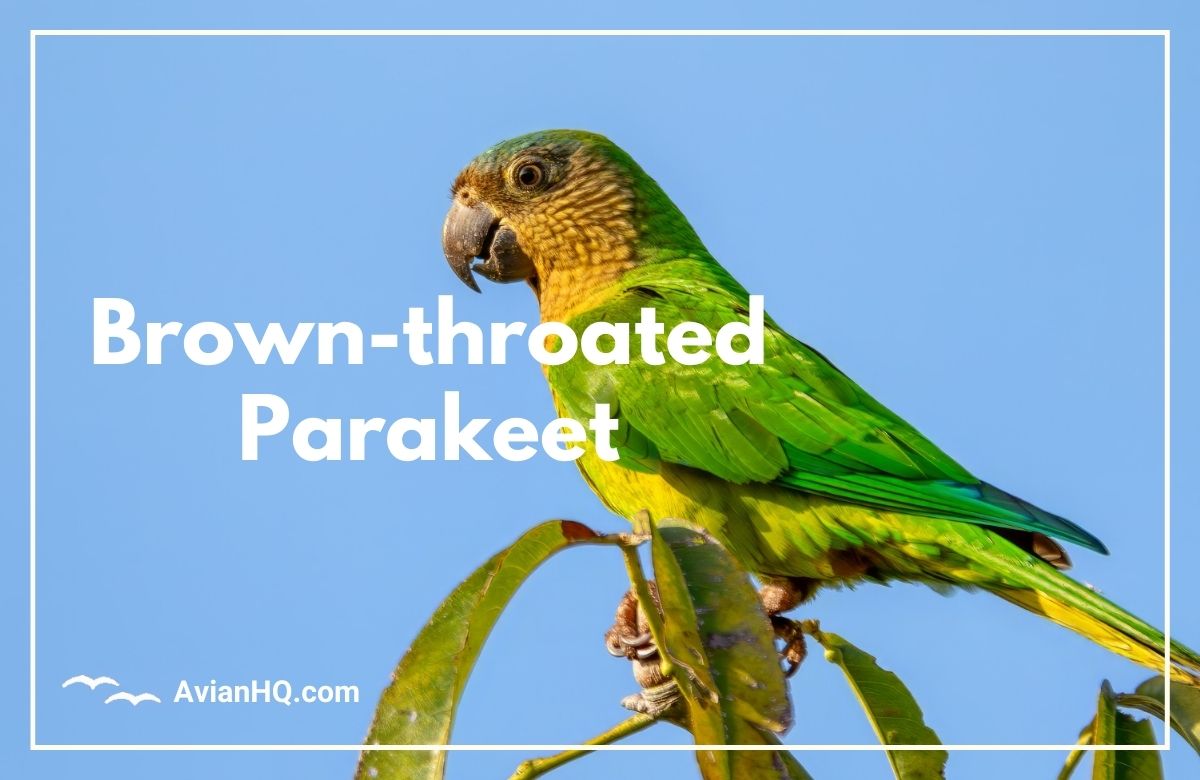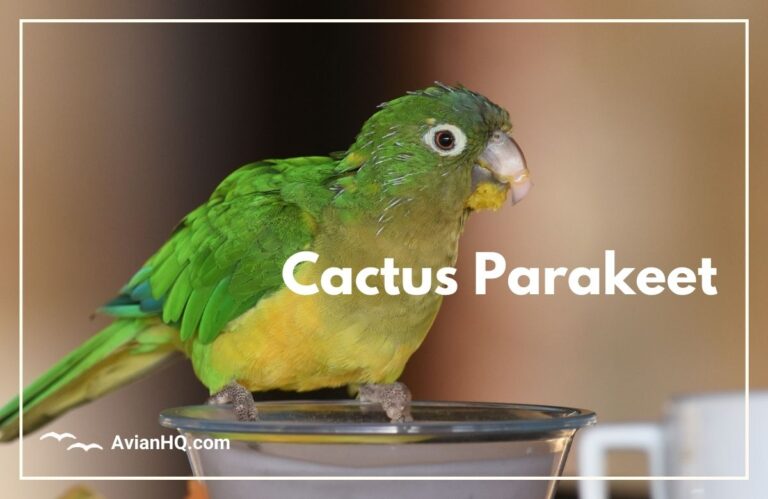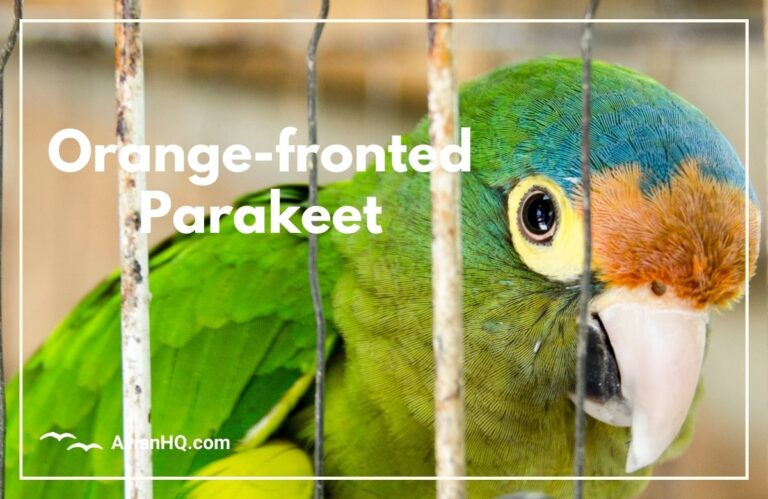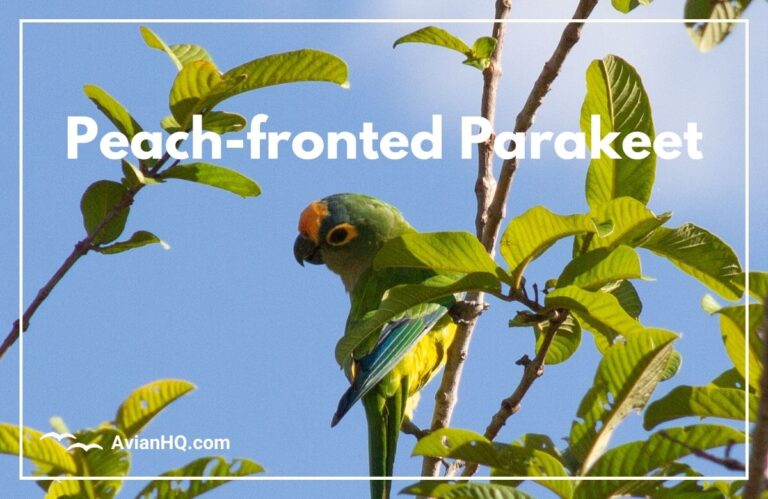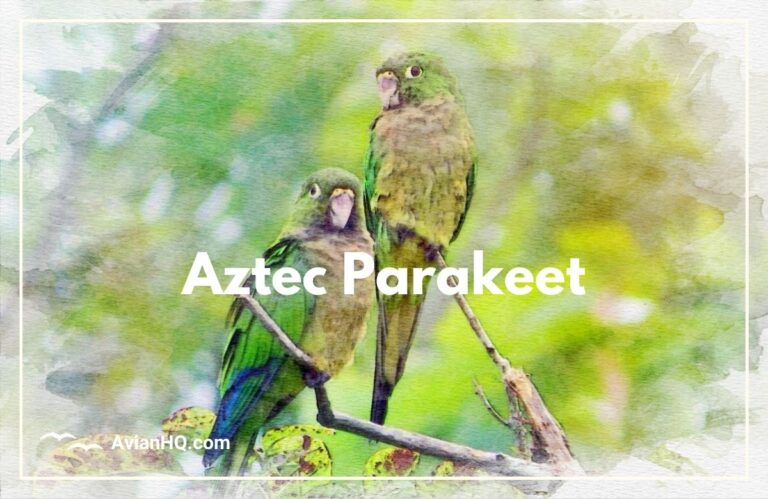Brown-throated Parakeet (Eupsittula pertinax)
Have you ever seen a bright flash of green dart past overhead, letting out a loud, ringing squawk? If so, you may have spotted the Brown-throated Parakeet! These vibrant little birds stand out with their jewel-like green color and namesake brown stripes. Though they originate from the forests and woodlands of South America—primarily Brazil, Bolivia, and Paraguay—some subspecies have expanded their range into new habitats.
Brown-throated Parakeets measure around 9 to 11 inches (23 to 28 centimeters) long and weigh between 2 to 3 ounces (50 to 90 grams). Don’t let their small size fool you – these social birds travel together in noisy flocks of 10 to 30 individuals! When they take to the skies with their fast, darting flight, they create a spectacle of color.
Fun Fact: Their genus name “Eupsittula” comes from the Ancient Greek words “eu” meaning “good” and “psittakos” meaning “parrot”. This likely refers to their talent for mimicry and learning vowel sounds.
The Brown-throated Parakeet prefers to live among the canopy layer of forests and woodlands. It uses its curved beak and quick, agile tongue to get nectar and pollen from flowers and fruits. Though it eats seeds as well, this parakeet prefers blossoms and tender new buds.
Stay tuned to learn more about this colorful little parrot, including its unique behaviors, conservation status, and cultural significance! The Brown-throated Parakeet has more surprises up its feathered sleeves…or wings, in this case!
History and Taxonomy
The Brown-throated Parakeet has had a long, shifting taxonomic history since its first scientific description over 250 years ago. In 1758, the parakeet was named Psittacus pertinax by French zoologist Mathurin Jacques Brisson. He placed it in the genus Psittacus which was at the time used for all parrot species.
In the early 1800s, more specific groupings emerged. The Brown-throated Parakeet was eventually moved to its current genus Eupsittula in 1937 by James Lee Peters. This change came about when researchers analyzed characteristics like behavior, morphology, and genetics. They determined that “good parrots” better grouped with other small, long-tailed American species.
Today, there are three recognized subspecies of Brown-throated Parakeet:
- E. p. vaga
- E. p. pertinax
- E. p. xanthogenia
The nominate subspecies E. p. pertinax has the widest distribution across southeastern Brazil, eastern Bolivia, Paraguay and into the Misiones Province of northeastern Argentina. The others have more localized ranges in regions like the Amazon Basin.
Physical Appearance
The Brown-throated Parakeet is a small-to-medium sized parrot standing around 9 to 11 inches (23 to 28 cm) tall. It is mostly bright green in color with its namesake stripe of brown feathers across the throat.
Size and Markings
- Weighs 2 to 3 ounces (50 to 90 grams)
- Wingspan ranges from 8.5 to 10 inches (22 to 26 cm)
- Brown stripe extends from chin down upper breast
- Blue secondary wing feathers visible during flight
- Tail feathers taper to a point and measure 3.5 to 4 inches (9 to 11 cm)
Coloration
Males and females look alike with vibrant green plumage, a yellow-green forehead, blue wing markings, and the signature brown throat. Juveniles hatch with duller colors and lack the throat stripe until their first molt. Regional subspecies can vary slightly – for example, E. p. xanthogenia has an overall yellowish tinge.
No matter its age or subspecies, the Brown-throated Parakeet always sports colorful feathers sure to turn heads! When a flock takes off in a blur of red foreheads, blue and green wings, it’s hard to ignore.
Habitat and Distribution
The Brown-throated Parakeet thrives in a range of forested tropical environments across South America. Its natural habitat stretches across many regions:
- Atlantic Forest in southeastern Brazil and northeastern Argentina
- Amazon Basin rainforest
- Dry forests and savannas of Bolivia and Brazil
- Foothill forests on eastern slopes of the Andes Mountains
This species typically sticks to the canopy layer towards the tops of trees. It prefers forests near streams or open areas and roosts in cavities of tall mature trees.
Range and Expansion
Overall, the Brown-throated Parakeet has an extremely wide distribution across:
- Much of eastern Brazil
- Northeastern Bolivia and Paraguay
- North into the Misiones Province of Argentina
Its global range is estimated at 1,560,000 square miles (4 million square kilometers). In recent decades, some populations have adapted to orchards, parks, and cities well beyond their native forests.
Diet and Feeding
The Brown-throated Parakeet is well adapted for reaching all types of food sources up in the rainforest canopy. Its varied diet consists primarily of:
- Flower buds, blossoms and nectar
- Fruits like figs, palms, and Cecropia
- Seeds from trees and shrubs
- Some small insects and insect larvae
This parakeet uses its curved beak like a pair of forceps to extract items. It has a long, slender tongue tipped with brushy papillae to slurp up nectar and pollen.
Feeding Behaviors
- Forages through canopy searching for food
- Uses feet to grasp onto branches
- Plucks fruit and twists it open
- Sometimes hangs upside down to reach
- Feeds in small groups or pairs most often
Brown-throated Parakeets need to eat frequently to fuel their high metabolism. Each tiny bird may consume up to 1 ounce (30 grams) of various plant material and nectar every day!
Their versatile diet and efficient foraging allows them to thrive across various New World habitats. From rainforest to orchards to city parks, if there are blossoms and fruit, this parakeet will find a way to eat well!
Breeding and Reproduction
The breeding season for Brown-throated Parakeets depends on their range, but typically coincides with rainforest fruit abundance. Courtship displays begin in the Spring, followed by nesting and rearing young in the Summer months.
Courtship and Mating
- Form monogamous breeding pairs
- Courtship includes mutual preening and feeding
- Flock together in groups of 10 to 30 birds outside breeding season
Nesting
- Nest in tree cavities, old woodpecker holes
- Line interior with wood chips to form bed
- Defend nest sites aggressively from rivals
- Use same nest for many seasons
Clutch and Young
- Lay 2 to 4 eggs per clutch
- Incubate eggs for 23 to 25 days
- Hatchlings fledge at 8 weeks old
- Parents feed chicks for 2-3 months after fledging
Interesting Fact: Brown-throated mothers can recognize their chicks by unique contact calls – even among hundreds of young fledglings! Parental care in this species helps ensure survival despite their small brood size.
Behavior and Ecology
The Brown-throated Parakeet is highly social and gregarious by nature. Its behaviors and interactions are often linked to its bright green flocking lifestyle.
Social Structure
- Form flocks of 10 to 30 outside breeding season
- Membership fluctuates
- Loosely organized hierarchy
- Cooperate to find food and roosts
Vocalizations
- Loud, ringing squawks
- Variety of chattering “parrot talk”
- Distinct calls to coordinate flock
Flight and Movement
- Fast, agile flier even among branches
- Swift darting over short distances
- Undulating path with quick wingbeats
- Roosts communally in tree cavities
Interactions
- Associate freely with other parakeet species
- Compete with macaws and parrots at clay licks
- Preyed on by falcons, owls and snakes
- tolerate human presence more over time
The Brown-throated Parakeet’s social flexibility aids its ability to adapt and take advantage of new habitat like orchards and cities. Listen for the busy chatter of a flock passing by!
Conservation Status
The Brown-throated Parakeet is currently classified as a species of Least Concern by the International Union for Conservation of Nature (IUCN). Its extensive range and large global population give it good odds for survival even in the face of some environmental threats.
- Global population estimated between 100,000 to 500,000 individuals
- Has extremely large extent of occurrence over 4 million square kilometers
- Not currently approaching any vulnerable population thresholds
However, experts still suggest more focused monitoring since some local subpopulations face higher pressure from:
- Habitat loss due to logging and agriculture
- Capture for the illegal wildlife and pet trades
- Competition with invasive bird species
Some Brown-throated populations occupying disturbed areas adapt more readily than forest-dependent groups as well. Continued urbanization may displace groups relying on old growth rainforest habitat.
Targeted conservation plans in Brazil aim to better protect key breeding areas for the species. Maintaining connectivity between isolated forest fragments can also allow groups to intermingle and enhance genetic diversity.
Cultural Significance
The bright green hue and vocal nature of Brown-throated Parakeets have earned them significance across the folklore and legends of indigenous South American peoples. Their visibility and adaptability also make them popular as pets around the world.
Myths and Folktales
- Feature in creation stories of Amazonian and Guarani tribes
- Belief they guided spirits of dead to afterlife
- Symbol of joy, playfulness and chatter
Pets and Aviculture
- Bred in captivity since the 1800s in Europe
- Popular pet for their beauty and intellect
- Readily mimic household noises
- Displayed in zoos and private aviaries
Feather Use
- Long tail feathers used in traditional headdresses
- Kept as good luck charms
- Traded among tribes for other goods
Today, the natural vocalizations of wild Brown-throated Parakeets bring the sounds of the rainforest to parks and green spaces far beyond their native range.
Conclusion
The Brown-throated Parakeet proves you can’t judge a book by its cover – or in this case, a parrot by its size! These compact, jewel-toned birds burst with energy and personality.
Across the forests of South America, Brown-throated Parakeets play a valuable role as pollinators and seed dispersers. Their need for nesting cavities also benefits other species seeking shelter. Fast-flying flocks dart through canopies, flashing bright tail feathers and calling to coordinate the group.
While still common, monitoring is important for populations more vulnerable to threats like habitat fragmentation. Their cultural significance and visibility make Brown-throated Parakeets ideal ambassadors to spotlight rainforest conservation.
Fun Final Fact: Brown-throated Parakeets can live over 20 years in captivity! Their longevity speaks to the species’ underlying health and vitality.
So next time you’re out exploring tropical woodlands, listen and look closely for these feisty green flock-fliers! If you catch their eye, you may get a flashy show celebrating the biodiversity these small parrots represent.

